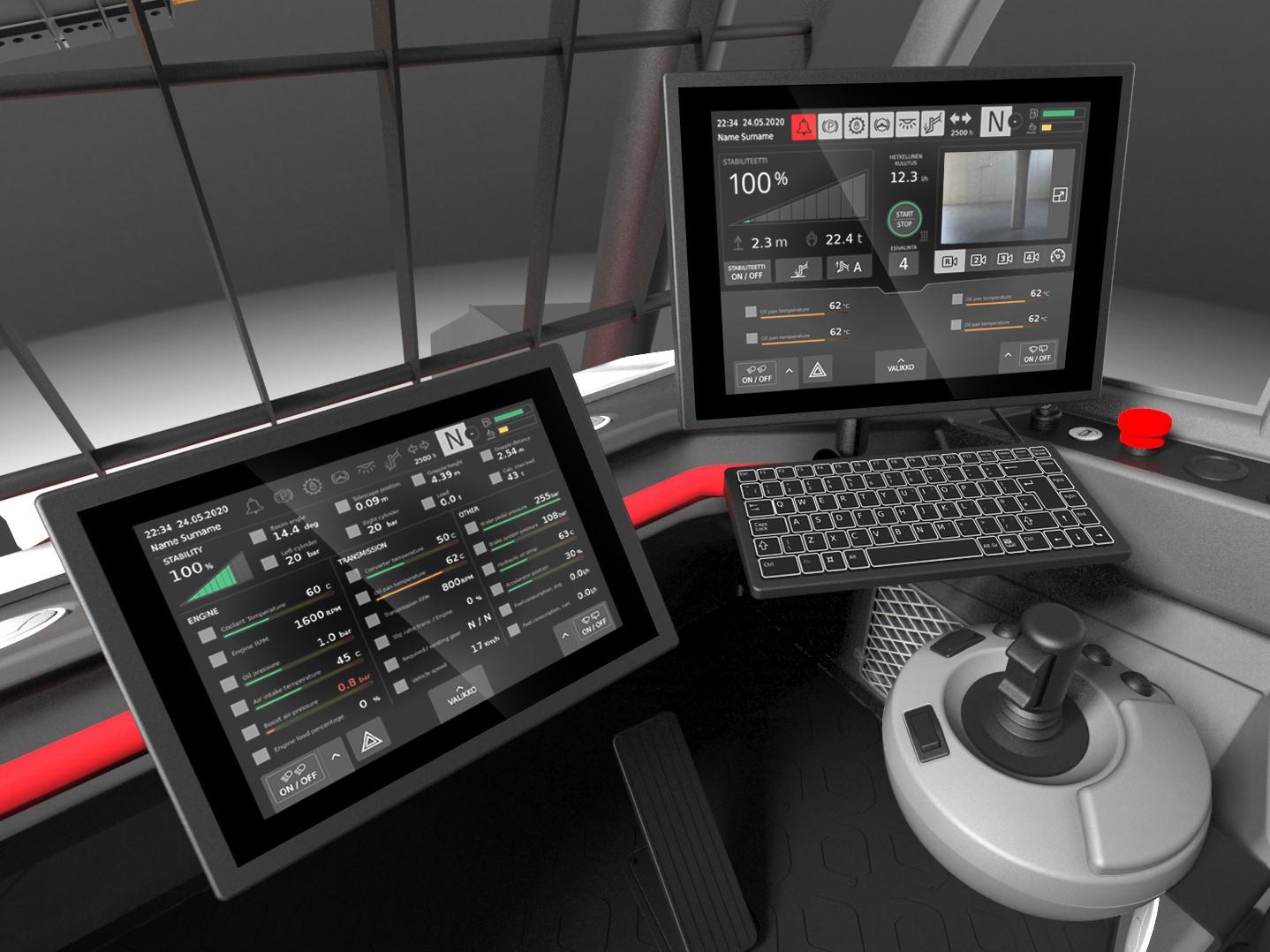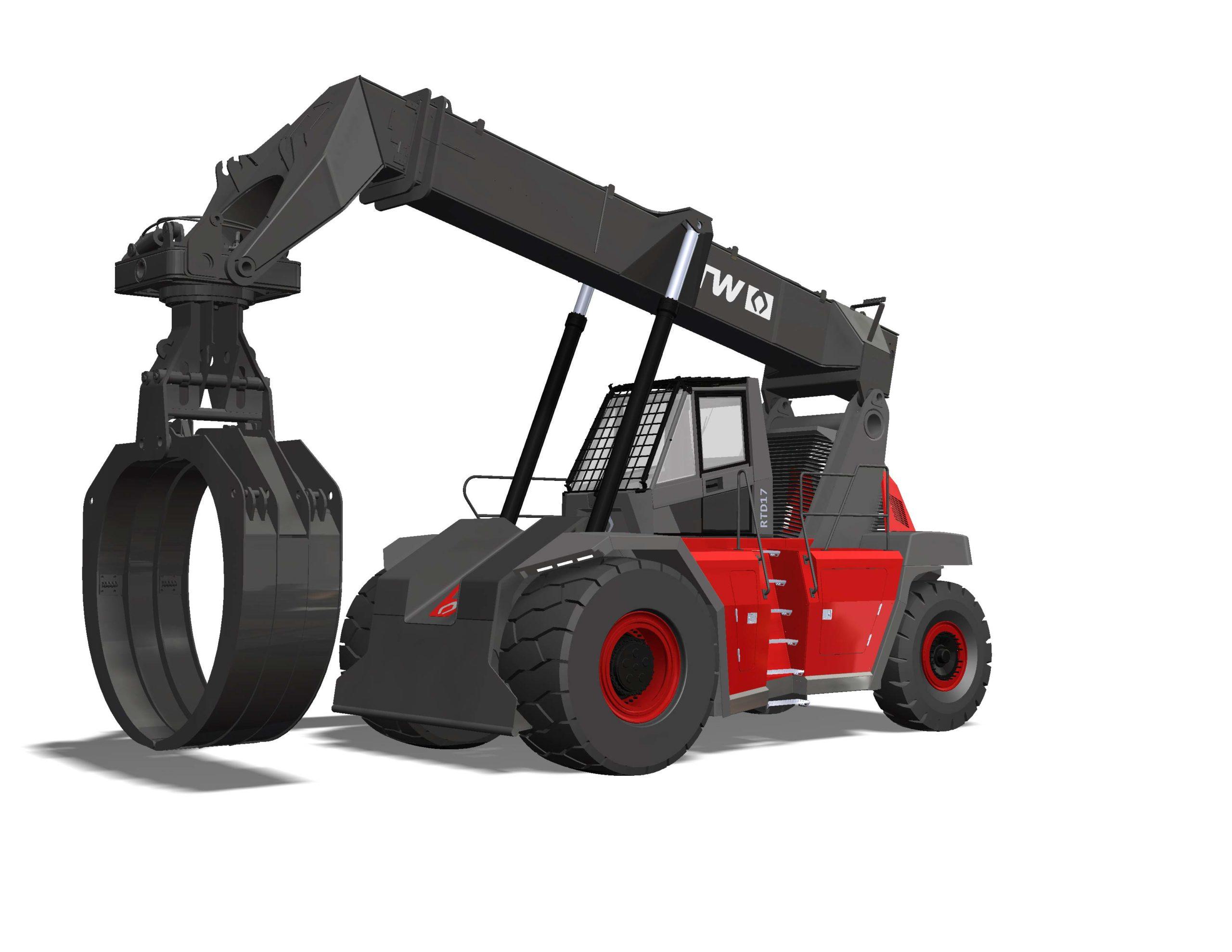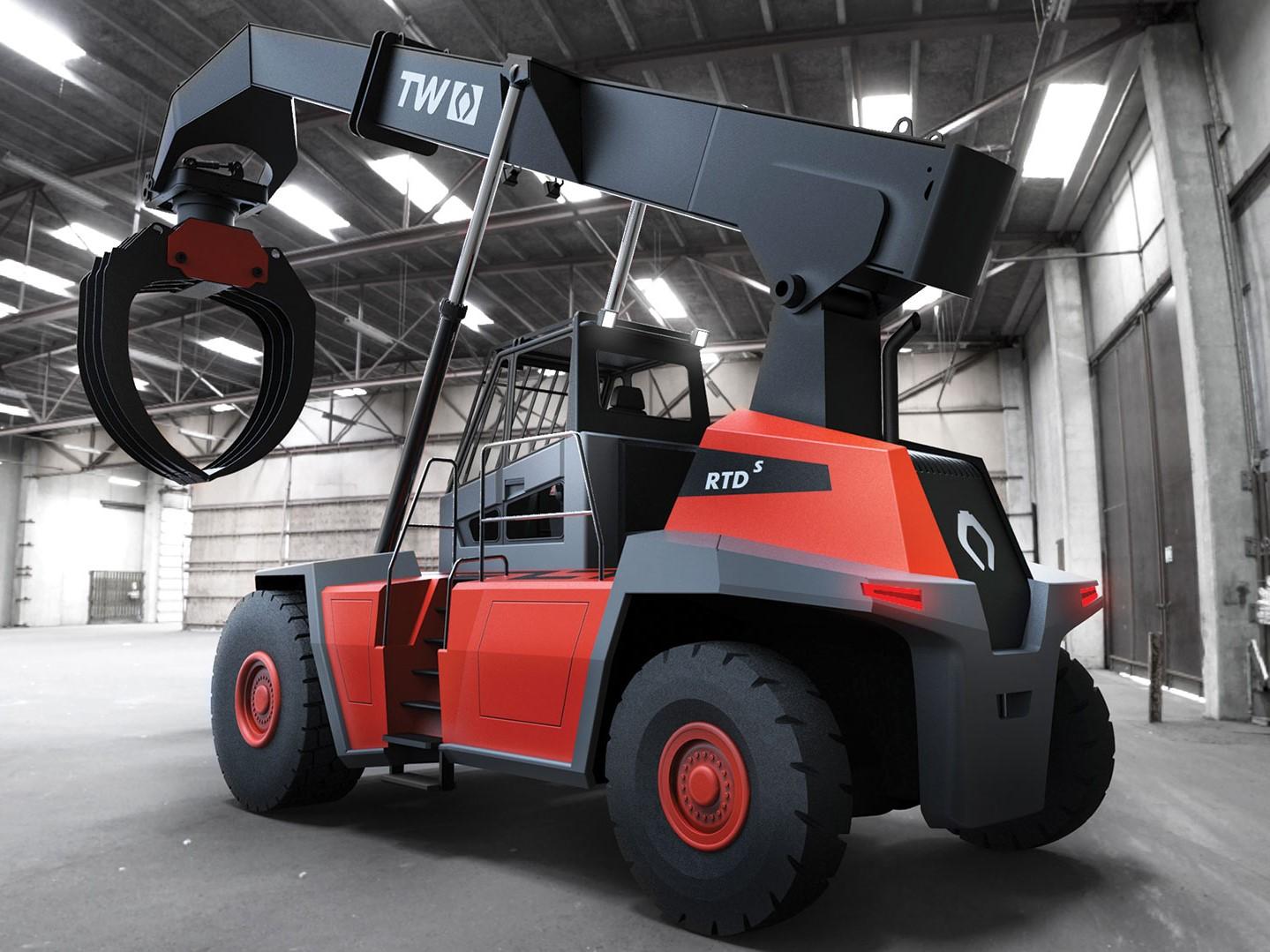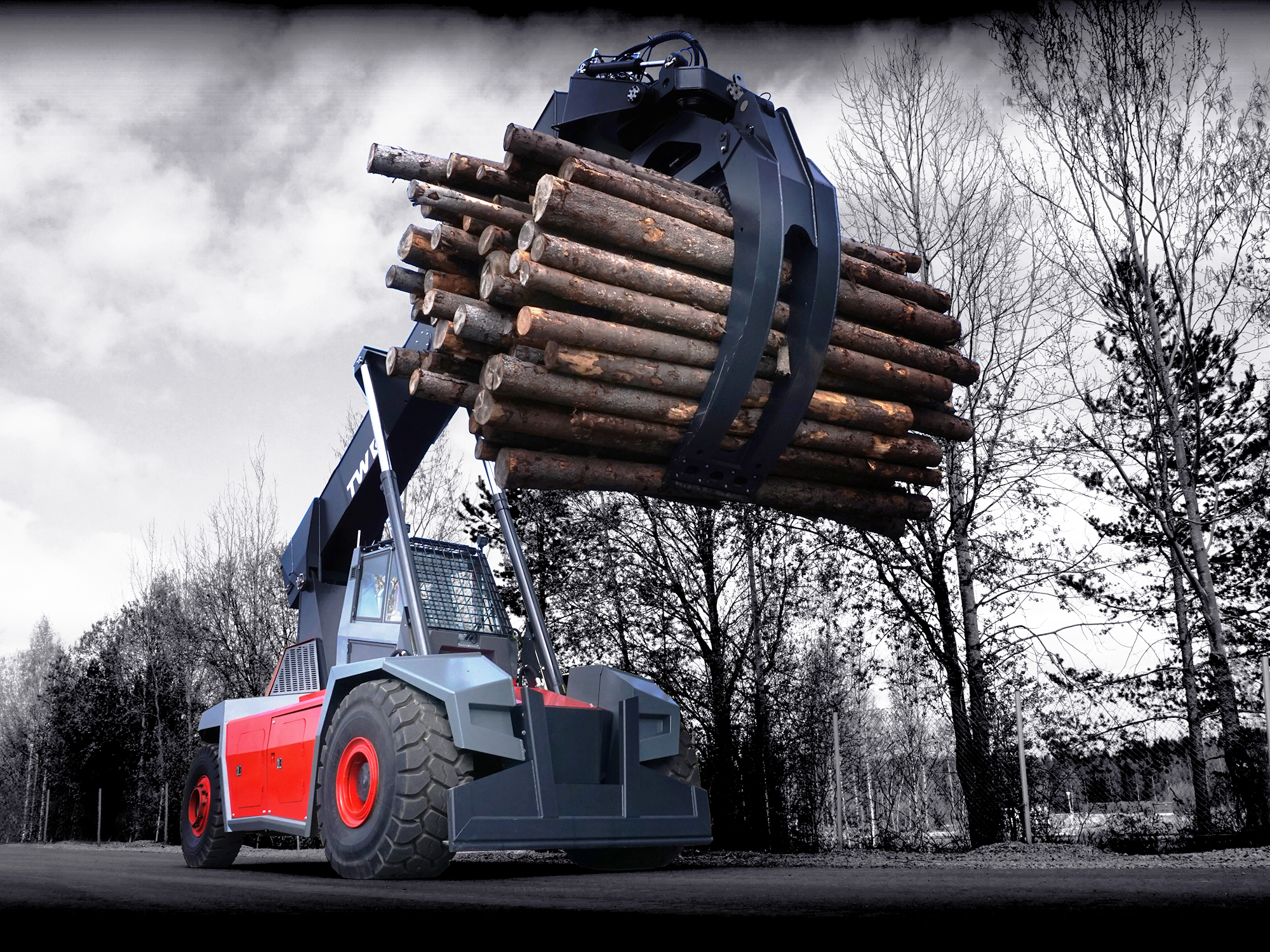“An engineer designs, but design is something quite different”
When Toijala Works was developing a new log stacker, the company also decided to acquire the best possible design expertise. “An engineer is practical and knows how to make a machine that works. But a new machine must also look new, and we received quick and efficient help from LINK Design with issues related to appearance and usability,” shares Frank van Nunen, LINK’s purchasing manager.
The goal of Toijala Works was clear: a new generation log stacker with the latest technology on the market that is easy to maintain and use. The need and potential of the machine in the global market was also known, and the new LogStacker would work its way both in Finland and around the world.


How and why did you end up collaborating with LINK Design, Purchasing Manager Frank van Nunen?
We had taken a fresh start with designing. We had resolved many issues related to the usability and maintenance support performance of the machine. But something was clearly missing: TW RTD12 Kuro’s appearance did not resemble a state-of-the-art work machine. We knew for ourselves that something about the appearance was not right. But what was it? That’s what we engineers couldn’t figure out.
LINK Design was selected from among the design agencies because its design process seemed so clear from the start. Throughout the entire process, we knew what the next steps would be. Their vision was also impressive: as early as the tendering stage, they were able to present a clear picture of what is being pursued.

How did the design process proceed?
All in all, the entire design work of the new log stacker took a year and a half. For two months of that period, we focused on design, and at that point LINK was a key cooperation partner. At the same time, we also refined the functionality, and this was a very critical step in the entire design process.
The project included three different entities focusing on the appearance of the machine, the design inside the driver cab and the entire user interface. What the driver sees on the machine screen and how he or she controls the machine is an integral part of the log stacker’s operation.
The contribution of the LINK team could be described as this: first we saw the castle in the air. It was a bold and wonderful vision, but it did not yet function in practice. From there, we started coming down towards the ground where we engineers reside. The end result was something from in between the castle in the air and a barn on the ground – a functional and nice-looking product.
The team had 3–4 designers from LINK and from our organisation, Product Line Manager Heikki Korpimaa was involved in the project in addition to myself. The team had 3–4 designers from LINK and from our organisation, Product Line Manager Heikki Korpimaa was involved in the project in addition to myself. The cycle was fast, and during the entire time, it felt like we were making good progress.

What did you learn during the process?
It became very clear to us that design is something completely different from the design work that we engineers do. Someone might have thought earlier that we could also draw those lines, but we can’t.
The importance of design and the related process opened up to us in a completely new way, even though I have been in the business for more than 20 years. It was great to see how the end result was achieved and how the shape evolves during the design process. TW RTD12 Kuro received an honourable mention in the internationally acclaimed Red Dot competition.
The LINK team understood our thoughts and knew how to translate it all to a form language that spectacularly and insightfully describes the core of our product.

What would you like to say to others who are considering acquiring design expertise?
My first piece of advice is: don’t do it yourself! It is worth investing in professional design work.
My second piece of advice is: don’t be alarmed even if you do see a castle in the air at the beginning of the process. In the beginning, you should not be too tied to the technical implementation. The time for this will come later. Several iteration rounds will be needed to find the optimal balance between practicality and design. But it will be found!
What we did
- Brainstorming and conceptualisation
- Ergonomics and usability design
- Strategic design, specification of the design line
- Industrial design
- User interface design
- Plastics design and mechanical engineering